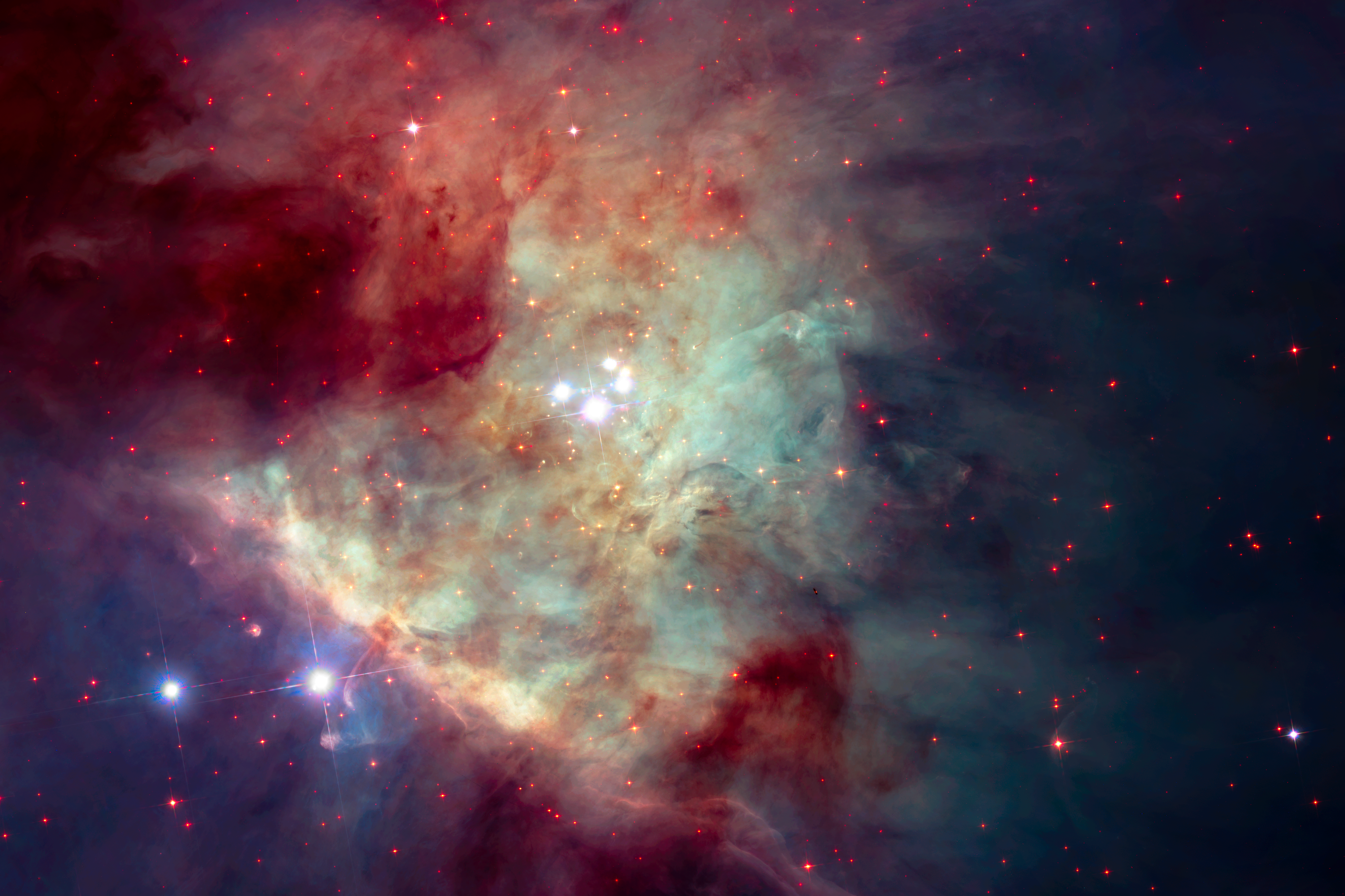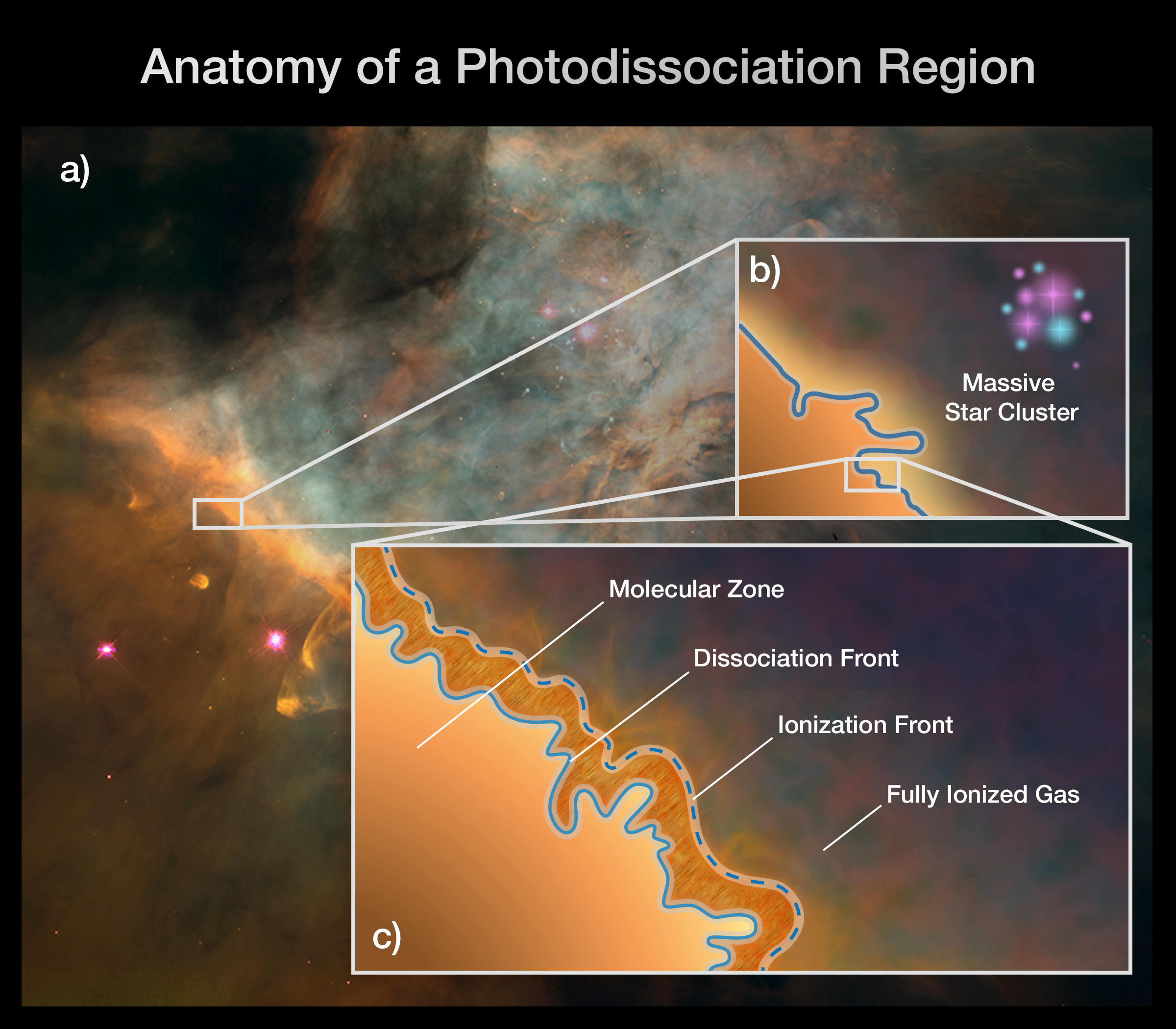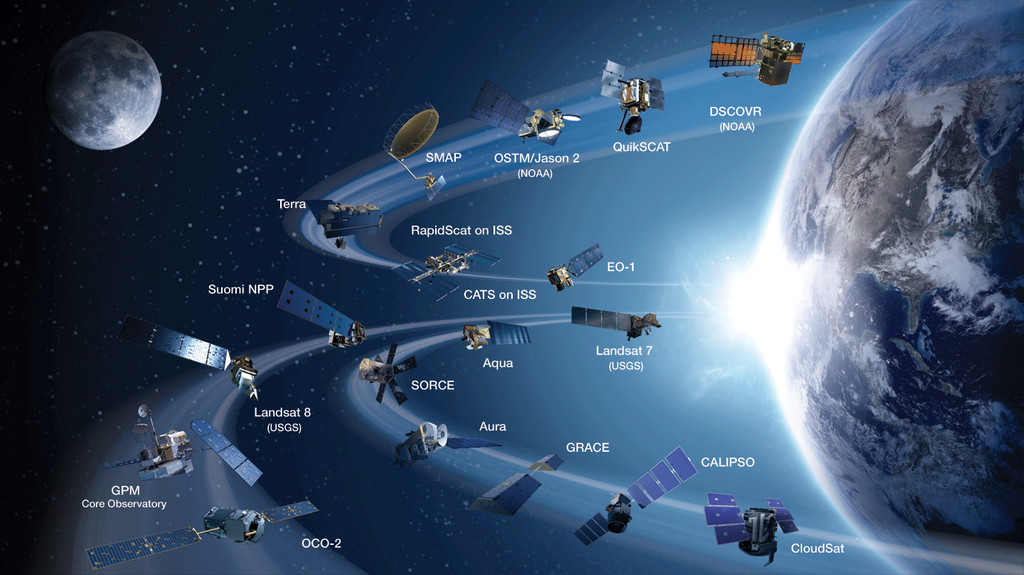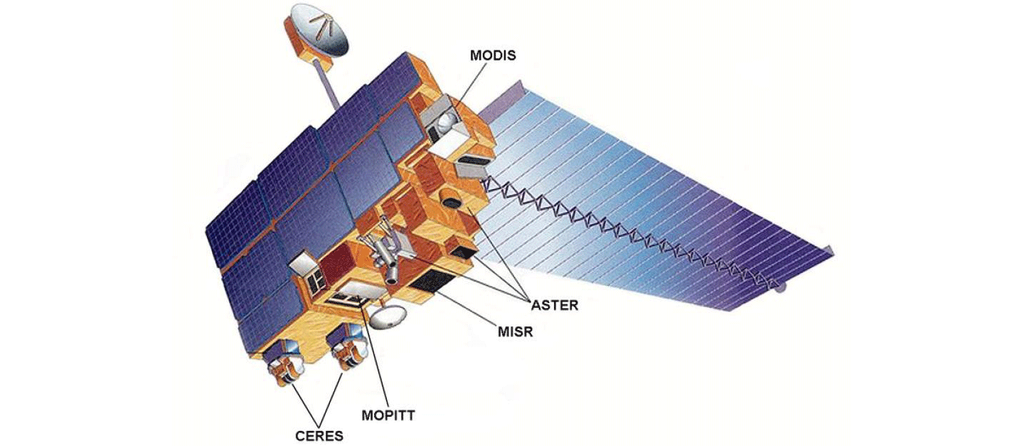1 min read
Orion Bar (Hubble)

The Orion Bar is a diagonal, ridge-like feature of gas and dust in the lower left quadrant of this HUBBLE image of the Orion Nebula. Sculpted by the intense radiation from nearby hot, young stars, the Orion Bar at first glance appears to be shaped like a bar. It is probably prototypical of a photodissociation region, or PDR.
About the Object
- R.A. PositionR.A. PositionRight ascension – analogous to longitude – is one component of an object's position.05h 35m 17.0s
- Dec. PositionDec. PositionDeclination – analogous to latitude – is one component of an object's position.-5° 23' 27.99"
- ConstellationConstellationOne of 88 recognized regions of the celestial sphere in which the object appears.Orion
- DistanceDistanceThe physical distance from Earth to the astronomical object. Distances within our solar system are usually measured in Astronomical Units (AU). Distances between stars are usually measured in light-years. Interstellar distances can also be measured in parsecs.The distance to the Orion Nebula is 1,500 light-years (460 parsecs).
- DimensionsDimensionsThe physical size of the object or the apparent angle it subtends on the sky.The image is 7.9 arcminutes (3.4 light-years or 1.1 parsecs) wide.
About the Data
- Data DescriptionData DescriptionProposal: A description of the observations, their scientific justification, and the links to the data available in the science archive.
Science Team: The astronomers who planned the observations and analyzed the data. "PI" refers to the Principal Investigator. - InstrumentInstrumentThe science instrument used to produce the data.HST>ACS/WFC, HST>WFC3/IR
- Exposure DatesExposure DatesThe date(s) that the telescope made its observations and the total exposure time.Oct. 2004 – Apr. 2005 (ACS), and Feb. 2015 – Oct. 2015 (WFC3/IR)
- FiltersFiltersThe camera filters that were used in the science observations.ACS/WFC: F435W (B), F555W (V), and F775W (i) WFC3/IR: F139M
- Object NameObject NameA name or catalog number that astronomers use to identify an astronomical object.Orion Nebula
- Object DescriptionObject DescriptionThe type of astronomical object.Emission Nebula
- Release DateMay 19, 2021
- Science ReleaseNASA’s Webb to Study How Massive Stars’ Blasts of Radiation Influence Their Environments
- CreditNASA, ESA, Hubble Space Telescope Orion Treasury Project Team, Massimo Robberto (STScI, ESA); Image Processing: Zoltan Levay (STScI), Joseph DePasquale (STScI)

This image is a composite mosaic of many separate exposures made by the ACS and WFC3 instruments on the Hubble Space Telescope using several different filters isolating the light of specific elements or of specific broad wavelength ranges. The color arises by assigning different hues (colors), to each monochromatic image. In this case, the colors are: Blue: F435W (B) Cyan: F555W (V) Yellow: F775W (i) Red: F139M
Related Images & Videos

Anatomy of a Photodissociation Region
This graphic depicts the stratified nature of a photodissociation region (PDR) such as the Orion Bar. Once thought to be homogenous areas of warm gas and dust, PDRs are now known to contain complex structure and four distinct zones. The box at the left shows a portion of the...
Share
Details
Laura Betz
NASA’s Goddard Space Flight Center
Greenbelt, Maryland
laura.e.betz@nasa.gov
NASA, ESA, Hubble Space Telescope Orion Treasury Project Team, Massimo Robberto (STScI, ESA)
Zoltan Levay (STScI), Joseph DePasquale (STScI)






























